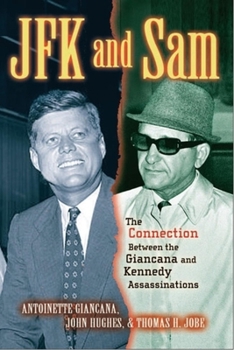JFK And Sam: The Connection Between the Giancana And Kennedy Assassinations
Select Format
Select Condition 
Book Overview
JFK and Sam is unique from other books on the Kennedy assassination. Written by an insider with access to key figures, it names the assassins and traces the assassination team's movements on November 22, 1963, and discusses the team leader's life and his taped confession.
Format:Hardcover
Language:English
ISBN:0394556410
ISBN13:9780394556413
Release Date:May 1993
Publisher:Alfred A. Knopf
Length:285 Pages
Weight:1.50 lbs.
Dimensions:1.2" x 6.7" x 9.6"
More by Jeffry A. Timmons
Customer Reviews
2 customer ratings | 2 reviews
There are currently no reviews. Be the first to review this work.
































